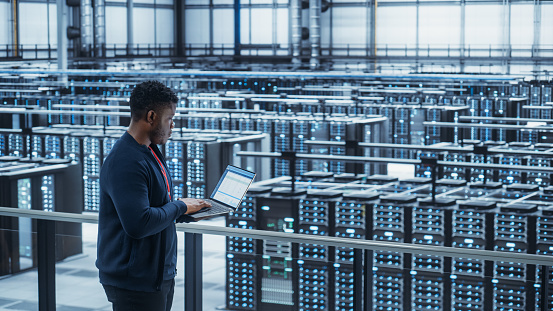
Data centers are the backbone of any modern business. They’re huge, complicated and powerful, but they’re also surprisingly simple. Whether you work in a data center or just want to understand how it works, this guide will help you cut through the jargon and get a clear picture of what goes on behind those locked doors.
How a data center works
A data center is a facility that houses servers, networking equipment and other technology to power your business. It’s often called the “engine room” of your organization because it provides all the necessary resources for you to run efficiently and effectively.
Data centers are used to store information in various ways, but they’re most commonly used as places where companies can host their websites or other web-based applications. If you’ve ever shopped online at Amazon or watched Netflix on TV, then you’ve used one of these types of services–and they’re only possible thanks to data centers!
In order for businesses like these to function properly, there must be adequate cooling systems in place within each individual facility so that everything remains cool enough throughout operation hours without causing damage from overheating components inside each server cabinet (or server rack). The exact type will depend largely upon factors such as geographic location where building was erected; however there are some basic guidelines which apply universally across this industry sector regardless what type building might house them:
- Air conditioning system design should include adequate fresh air supply ductwork connecting intake louvers located outside those rooms where computers operate 24/7 365 days per year without fail.* Exhaust fans should be sized appropriately based upon expected volumes generated by servers being utilized within given rooms; while also accounting for additional heat generated by lights overhead fixtures etc…
The physical layout of a data center
The physical layout of a data center is designed to maximize redundancy, so that if one component fails, there will be another to take its place. The power distribution system is laid out in such a way that it can be easily repaired and maintained if any part of it fails. Cooling mechanisms are also in place to keep temperatures stable and prevent overheating–this includes both air conditioning and air cooling methods like fans or tankless water heaters (which use pipes filled with cold water). The layout must also allow for easy access for technicians who will be working inside the facility on a regular basis; this often means installing narrow walkways between racks so employees don’t have to move them when performing repairs or upgrades on servers or other hardware within those racks.*
The toolkit for an effective data center
A successful data center has all the right tools to keep everything running smoothly. Here’s a quick rundown of what they are:
- Power distribution systems. These ensure that your facility can receive electricity and distribute it to each of its components. The main components include power distribution units (PDUs), which measure how many amps and volts are being used by equipment; circuit breakers, which stop current from flowing into an overheated or overloaded circuit; and switches, which control whether circuits are on or off.
- Cooling systems. Your servers need air flow to stay cool, so cooling systems blow in fresh air through vents at different speeds based on their function–ventilation fans bring in cool outside air while exhaust fans remove hot air from inside the server room.* HVAC systems help maintain temperature within certain parameters.* Fire protection systems detect fires before they spread throughout your building.* Security systems keep unauthorized people out of sensitive areas such as server rooms.* Power distribution panels convert incoming AC voltage into DC current required by computers and other electronic devices; battery backup units provide emergency power if there’s no electrical service available for an extended period of time (elderly people often have these installed in case there’s ever an outage).
Data centers can be complex but they aren’t always mysterious.
Data centers are physical spaces. They are filled with computers and other equipment, like servers, routers and switches. The goal of a data center is to provide high availability for your organization’s applications and services by keeping them available around the clock. Data centers are designed for efficiency: they use power more efficiently than office buildings because they don’t need lights or heating/cooling systems; they don’t waste space by storing paper files so everything can be stored digitally; and they use virtualization technology to make sure that only one copy of each application or website exists on hardware instead of having multiple copies running simultaneously (that eats up resources). Data centers also need security features such as fire suppression systems and access control measures like biometrics or card readers at doors so only authorized personnel may enter them–and this makes sure that if someone gains unauthorized entry into a facility, they won’t be able to do much damage before getting caught!
Conclusion
We hope that this article has helped you understand the basics of how a data center works. While it can be a complex process, there are some basic principles that can help make things easier to understand. Data centers are valuable assets for any business because they allow them to store their data safely and securely, allowing employees access from anywhere in the world at any time.


















